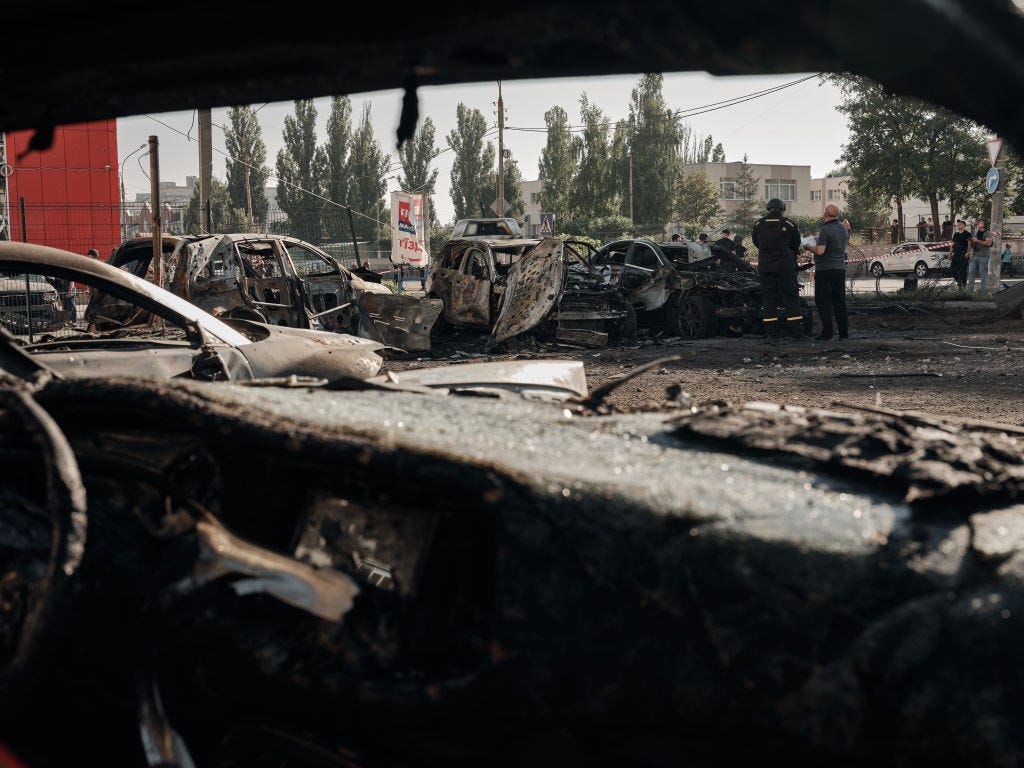-
Russia carried out a $1.3 billion airstrike on Ukraine this week.
-
Hundreds of UAVs and missiles, including Shahed attack drones and ballistic missiles, were used in the attack.
-
Inflation in Russia has soared as a result of high government spending on the war in Ukraine.
On August 26, Russia launched a large-scale airstrike on Ukraine, deploying a series of missiles and drones estimated to have cost a total of $1.26 billion, according to calculations by the Ukrainian news agency Economic Pravda (EP).
The Ukrainian air force said on Telegram that it had detected 127 missiles and 109 unmanned aerial vehicles (UAVs) during the strike, which it said targeted Ukraine’s energy infrastructure. It added that it had shot down 102 of the missiles and 99 of the UAVs.
According to the air force, the Kinzhal and Iskander ballistic missiles, Kalibr and Kh-101 cruise missiles and Shahed attack drones were among the weapons used.
It added that Russia fired 77 Kh-101 missiles, which hit a Estimated cost of $10 million to $13 million eachaccounting for the largest share of expenditure.
According to the Center for Strategic and International Studies Missile Defense Project, the Kh-101 is a “stealthy missile” with a conventional warhead that is designed to “evade air defense systems by flying at low, near-terrain altitudes and thus evading radar systems.”
The attack on Ukraine took place amid rising inflation and warnings of overheated economy in Russia.
While Russia’s high defense spending on the war in Ukraine initially boosted economic growth and eased fears of a looming recession due to Western sanctions, it has now led to skyrocketing inflation, which stood at 9.1% in July.
The Russian central bank raised its key interest rate to 18% in July, saying inflation had “accelerated” and was “developing significantly” above April’s forecast.
Russia’s economic growth slowed to 4% in the second quarter of 2024, down from 5.4% in the first quarter, AFP reported in August, citing official data.
Maximilian Hess, a fellow at the Foreign Policy Research Institute, told BI that Putin was prepared to throw the entire Russian economy behind this war and that there were no signs that would change. “There is no real resistance within the Russian elite, so that is not going to change.”
But Hess said that with this level of spending, Russia would eventually have to make significant budget changes or cuts in other areas because inflation was “out of control.”
Read the original article at Company Insider

